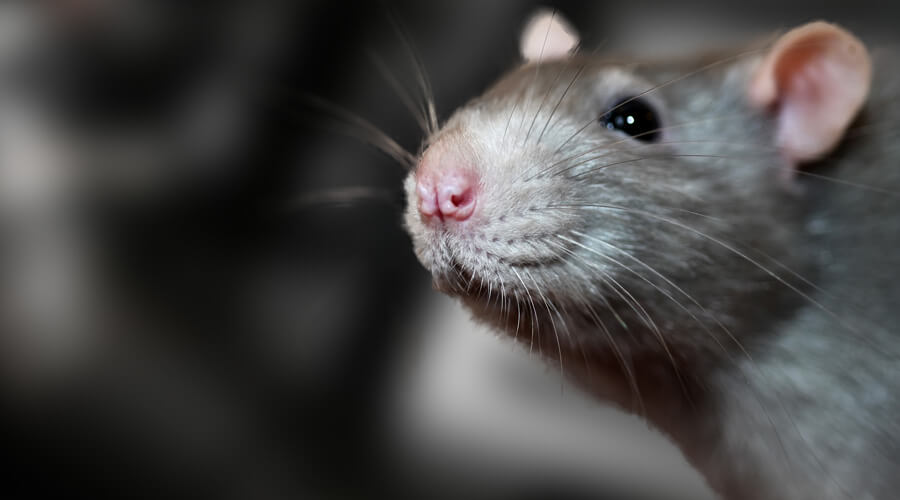But while insurance covers this chewable offence in Australia, it seems US vehicle owners are taking the case to a higher level – the courts.
After a class action against Honda was filed in January last year, more customers from other brands have come forward complaining that they have forked out for repairs to vehicle wiring after rodents put insulation on the menu.
The Honda action is ongoing and was joined in August last year by a class action from Toyota owners who were chewed up by the cost of replacing wiring – whether wholly or in excesses charged by their insurers – and the concern that new wiring had the same attraction to rodents as the old wires.
While motorists and lawyers have got their teeth into the issue in the US, neither case has reached a conclusion while more Toyota and Honda owners are joining the feast.
The issue in both Honda and Toyota cases centres on soy-based wiring insulation. Who would have thought it’s not just bearded hipsters from Carlton that are big on soy products?
It was however put there for good reason – the product is biodegradable and a renewable resource and implemented at the beginning of a green age in automotive manufacturing.
Specific vehicles nominated in the US are a range of models from Toyotas made in 2012 to 2016 to Hondas – including CR-V, Accord and Pilot – built from 2012 to 2015.
In a public statement in the US, Toyota said it could not comment on a pending lawsuit but said “rodent damage to vehicle wiring occurs across the industry and the issue is not brand or model specific”.
The ABC Radio in Melbourne earlier this year reported that callers had a list of wiring woes related to rodents, which included:
“Warm cars at night and fruit trees equals rats in the engine bay; they did $1,000 worth of damage to my two-week-old Toyota LandCruiser.” – David, Bells Beach
“I had to completely replace the wiring loom on my car because rats had eaten enough to cause my car to stop running.” – Jack, Moolap
“My Kia’s wiring was eaten by rats two years ago. It cost just under $8,000 to replace because modern wiring involves a whole new wiring loom.” – Maria, Fryerstown
“Mice ate all the way through to the central computer on my 2005 Peugeot when we were overseas for six weeks. The mechanic said they seem to love the coating on the wires.” – Robyn, Colac
The Victorian Automobile Chamber of Commerce said it had heard of limited cases of rats eating cars.
“We’ve heard of some instances occurring in Australia but we haven’t had any instances reported in by VACC members, which might mean that it’s not a widespread problem,” said spokesman David Dowsey.
“From what we know, most of that is occurring overseas, not so much in the Australian carpark.”

GoAutoNews Premium made enquiries around the country and found that in many regional centres, rodents nibbling on car insulation is quite common.
One electrician said it was equally a problem with some house wiring as rodents tend to enjoy chewing more as an action to trim their teeth then something to eat, yet, oddly, “we don’t find dead rats in the roof that have been electrocuted”.
The Autospark store in Albany in southern coastal Western Australia said chewed wiring was a frequent issue with motorists and was neither brand specific or reflective of the age of the vehicle, which knocks the soy-based meal theory on the head.
Autospark staffer Wendy told us that it was a common regional problem “especially when the weather turns cold and the mice and rats seek respite in a warm – or at least protected – engine bay. Once they are in there they gnaw on whatever is available”.
She said it was especially bad a few years ago when the coastal town had a particularly icy winter. But she added that homes had similar problems as rodents, mainly possums, chose roof spaces as shelter.
Another auto electrician contacted in Queensland said it wasn’t an unknown problem and was usually repaired after an insurance claim. He said he saw no trend in types of vehicles or vehicle ages.
It is not specific to vehicle type and is also not specific to the culprits. Chewees include rats, mice and rabbits, and added to in the US with raccoons and squirrels, but in the US, claimants and their legal advisors are smelling a rat. They say it is all the fault of the vehicle manufacturer and want compensation.
One Toyota Tundra owner from Indianapolis said his 2012 truck had been the tooth target of rodents for four years. He claimed it started with an engine warning light coming on – and staying on – as the vehicle picked up on an electrical fault triggered by a rodent attack.

He blames Toyota for using insulation that attracts animals. Further vehicle problems included a flurry of new warning light illuminations and the demise of his cruise control feature.
In a statement, he said: “I feel the manufacturer bears responsibility for changing materials…and it has been a big disappointment and very expensive.”
The lawsuit filed against Toyota in United States District Court in California said it acts for millions of Toyota owners nationwide and claims it switched the materials used to protect wiring inside the electrical systems of its vehicles.
It alleges that instead of petroleum-based insulation, many car-makers have switched to soy-based insulation that is said to be more environmentally-friendly.
The lawyers for the petition say that while that soy-based product may be better for the environment, it is also better – and more delicious – for rodents, who are attracted to it as a food source.
“It would literally be like putting honey in your car or peanut butter in your car and then acting surprised that insects and ants and bees are being attracted to it,” the attorney said.
“You’re effectively putting something there that the rats want, in an environment that the rats want. It’s almost like you’re creating a Ritz Carlton for the rats.”
The attorney has admitted he is not sure how widespread the problem is, but he filed the case as a class-action complaint after seeing “a lot” of complaints.

Rat-proofing cars. Some cures
DOMESTIC myths, snake-oil remedies and good old-fashioned pesticide have been listed as the answer to ridding your car of rodents. Here’s some more:
Rodent-deterring tape: an electrical tape treated with the active component in chili peppers that can be wrapped around the existing wires. Possibly could end up tasting like a very spicy soy-based laksa.
Cayenne pepper: Has potential.
Moth balls: At least the rat won’t have fur issues.
Rat traps: This one gets a tick.
Baits: May be eaten by pets.
Cats: May add to problems.
Coyote urine spray: Not on Coles or Woolworths shelves – yet.
Leave the bonnet up: Reduces the shelter. OK in a locked garage.
By Neil Dowling















 Read More: Related articles
Read More: Related articles

